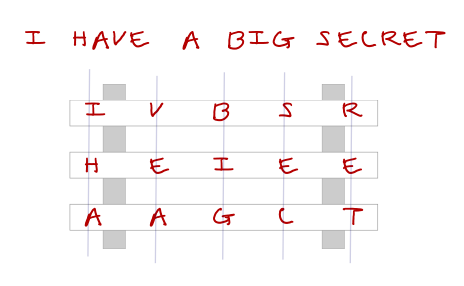Deciphering a mysterious message is akin to rummaging through a cluttered attic, searching for a hidden treasure. Each cipher, like a dust-covered relic, holds the promise of revealing something significant. The art of cryptography is steeped in history, where codes have both obscured and unveiled truths, often fueling intrigue and discovery. By understanding various characteristics of ciphers, one can skillfully dissect encrypted messages and unravel their meanings.
In the realm of cryptography, the initial step toward identification is familiarizing oneself with the types of ciphers that exist. Ciphers can broadly be categorized into two main types: substitution and transposition. Substitution ciphers replace each letter or group of letters with another letter or symbol. A classic example is the Caesar cipher, wherein letters are shifted a certain number of places in the alphabet. Transposition ciphers, on the other hand, rearrange the letters in a message without altering the actual letters themselves. An example of this would be writing in a grid and then reading the columns vertically instead of horizontally. Understanding these foundational types is crucial, as it provides a framework within which one can analyze a given encrypted message.
Once you have a grasp on the types of ciphers, the next task is to examine the structure of the mysterious message. Look for patterns in the arrangement of characters; frequencies of letters or symbols might reveal significant insights. For instance, in languages like English, the letter ‘E’ appears most frequently. Consequently, in a substitution cipher, the most common character you encounter could very well correspond to ‘E’. This frequency analysis is akin to standing at the entryway of that dusty attic, noticing faint outlines of what might be hidden amongst the clutter.
Beyond mere frequencies, another analytical tool involves examining digraphs and trigraphs—pairs or triplets of letters. In English, certain letter combinations, such as ‘TH’, ‘HE’, and ‘IN’, are particularly common. Identifying these clusters within the coded message can serve as a beacon, guiding one toward deeper revelations. As you sift through potential combinations, hauntingly familiar echoes of language will beckon from the depths.
The next step is to consider context. Every cipher is forged within a specific milieu, and understanding the historical or situational backdrop can provide vital clues. For example, a message encoded during a time of war might reflect the vernacular of espionage or military strategy. Similarly, a message steeped in a cultural reference may incorporate idioms or colloquialisms specific to a region or group. This contextual awareness can illuminate the pathways towards deciphering that enigmatic script.
Equipped with an understanding of the types of ciphers, structural analysis, and contextual influences, it’s crucial to engage in trial and error. Test different hypotheses about potential cipher types and methods of encryption. This methodical exploration can be likened to piecing together a jigsaw puzzle, where each attempt reveals either a clearer picture or a new direction. During this stage, patience is indispensable; not every attempt will yield success, but enduring through the process can lead to remarkable breakthroughs.
While one relentlessly pursues accurate decoding, it’s imperative to consider the presence of polygraphic ciphers—wherein patterns extend beyond individual letters to include groups of letters or entire phrases. The Playfair cipher serves as an illustrative example; instead of encrypting each letter independently, it encrypts pairs, making detection that much more complex. Thus, when confronted with unfamiliar arrangements, be prepared for the possibility of intricate layers lurking beneath the surface.
Beyond physical characteristics and patterns, emotion plays a significant role in cryptanalysis. The coder and the decoder share a symbiotic relationship, often driven by the intentions behind the cryptographic act. Understanding motivations can yield invaluable insights—it’s akin to knowing a person’s backstory when reading their diary. Whether a message’s purpose is to challenge, protect, or mislead, deciphering the emotional nuances can provide a richer understanding of the cipher’s content.
As you delve deeper into this cryptographic labyrinth, take heed of the many resources available. Cryptanalysis has been studied extensively, and a wealth of literature exists that can guide your quest. From historical contexts to modern interpretations, each text expands the pool of knowledge, illuminating pathways that may have previously remained obscured. In this age where information cascades like a relentless river, the commitment to learning is an invaluable asset to the cryptographer’s toolkit.
In conclusion, identifying the cipher used in a mysterious message requires a multifaceted approach. It encompasses a keen understanding of cipher types, rigorous analysis of letter frequencies and patterns, the interplay of context, and the vigilance found in methodical trial and error. It is a delicate dance—a fusion of logic and intuition. Each key discovered unlocks a treasure chest of knowledge, revealing truths long hidden beneath layers of intrigue. Ultimately, the satisfaction of unraveling a cipher is not merely about understanding the message but becoming part of a rich tapestry that connects past and present, creator and interpreter.








Leave a Comment